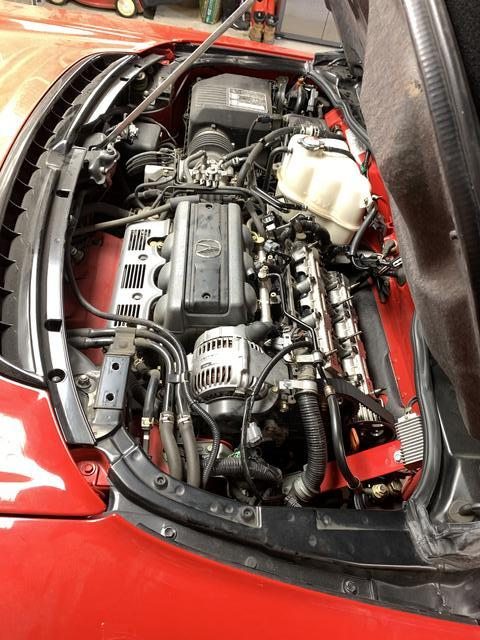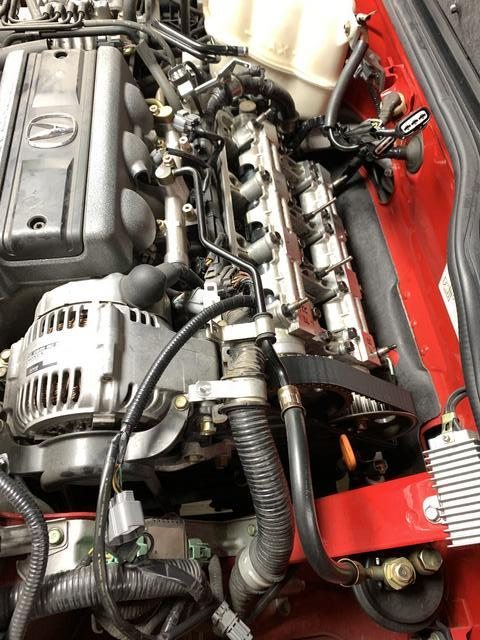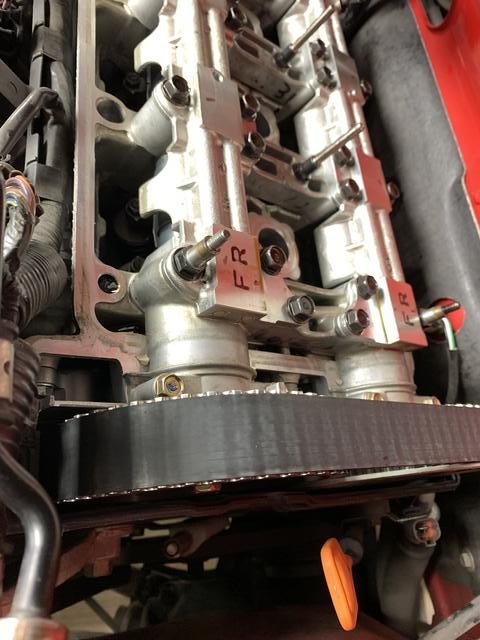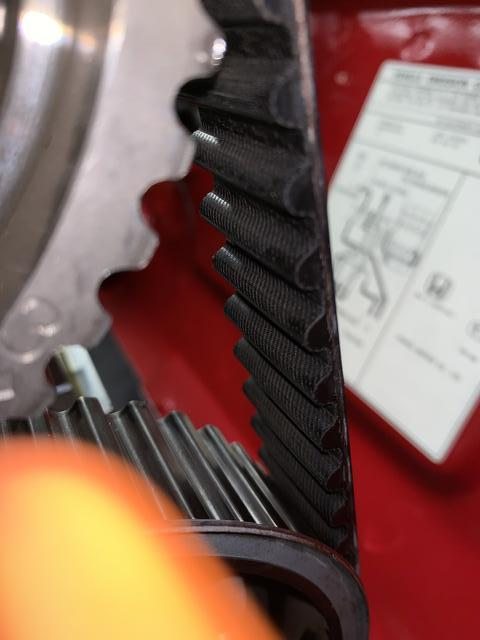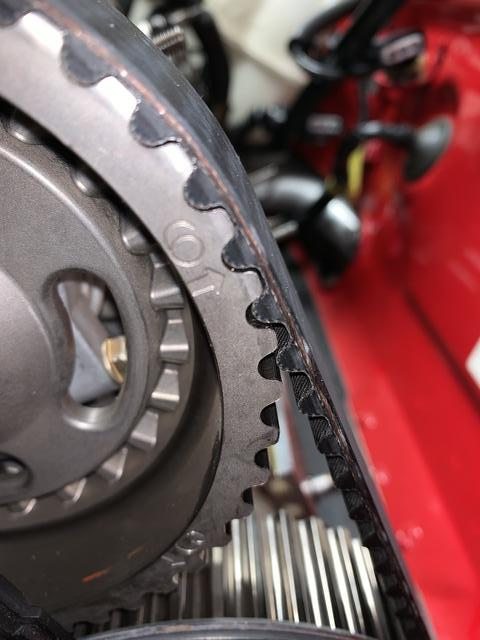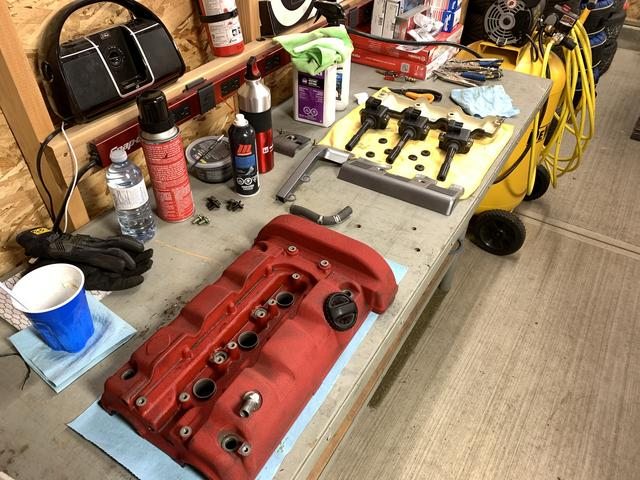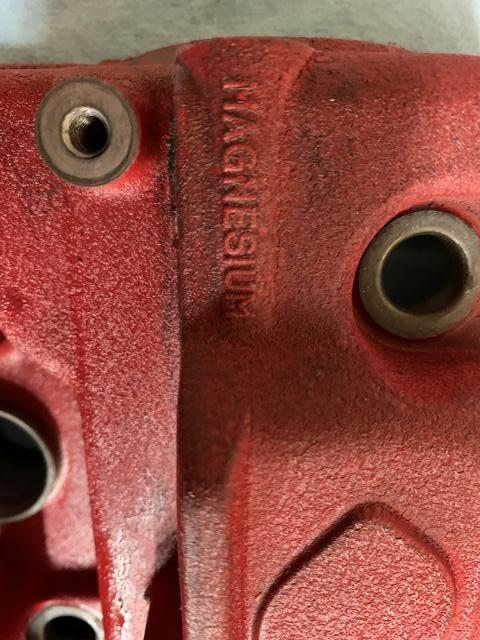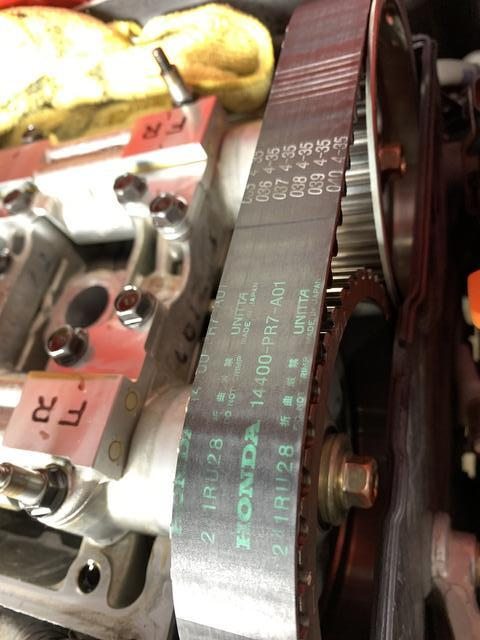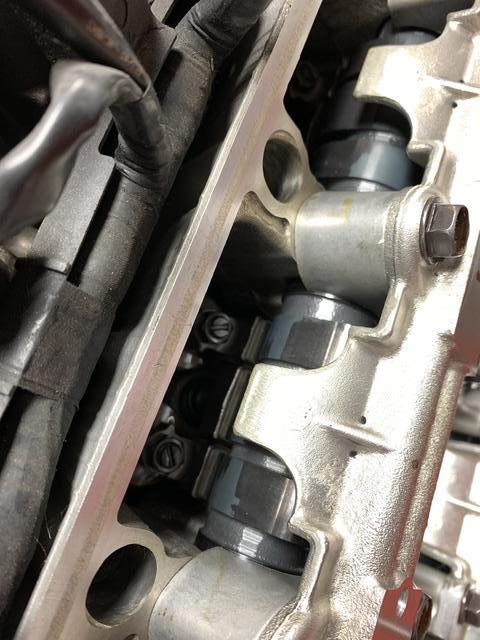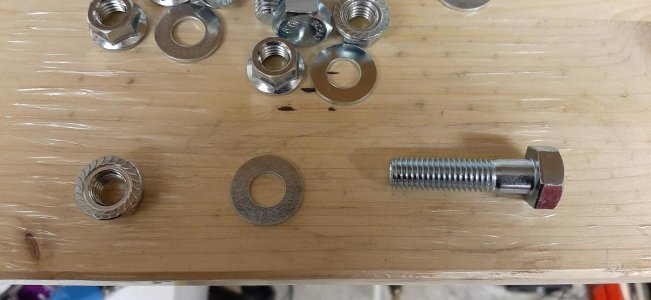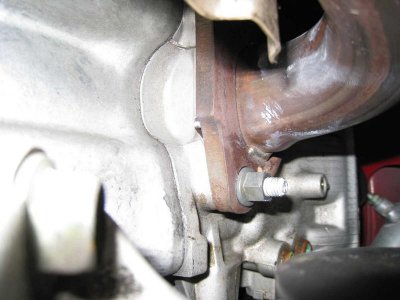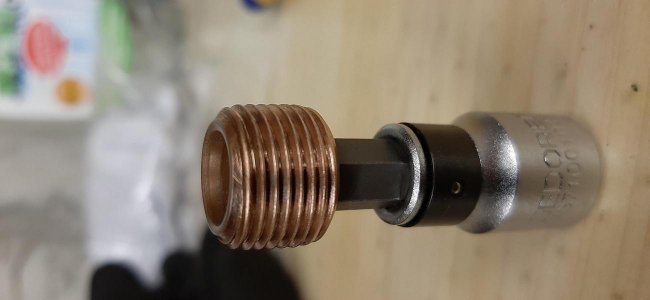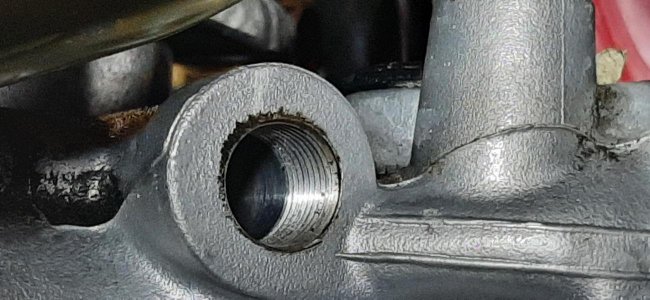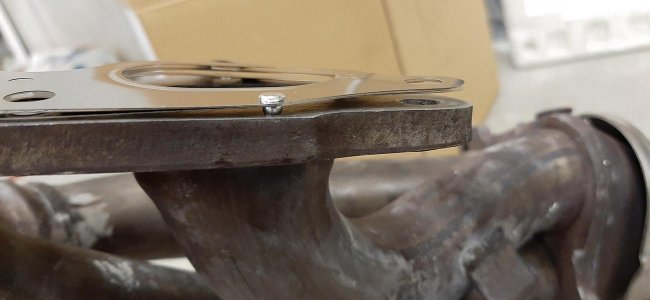I was changing out my clutch master and slave cylinders and after I got to the point in the first picture below, I looked up at the engine side and saw a dreaded oil leak. I tried to find where it was coming from but can’t seem to pinpoint it. It seems to be pooling up on some mini exhaust looking piping (it has an expansion joint in it) at the very front of the engine in front of the forward cylinder head. At first I was just going to snug it down a little more but figured I should run it by you guys first.
The actual question is can you identify where this oil leak is coming from? If you want more pictures I can run out and grab them.
The original work:
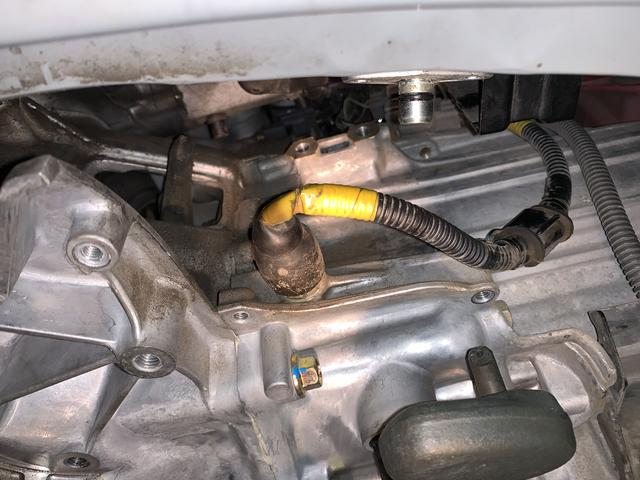
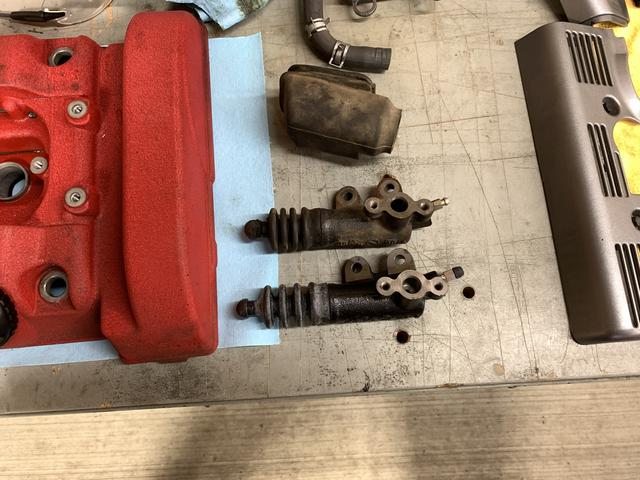
Now the actual leak, this next picture is looking down from the top of the engine, front cylinder head, on the corner closest to the interior and center of the car. The oil is pooling on the bottom of this flange.
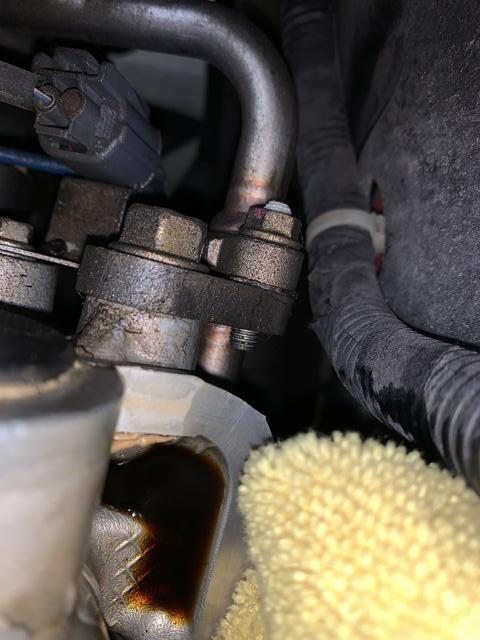
The next few pictures I basically put my phone up as high as I could and just started blindly shooting as I couldn’t really get my arms in there and still push the picture button. The bottom of the picture above is shown next. It almost looked to me as if that lower threaded plug was the culprit but that wouldn’t make sense from where the oil bubble is. I was thinking of just cave man tightening those 2 down but will hold off for now.
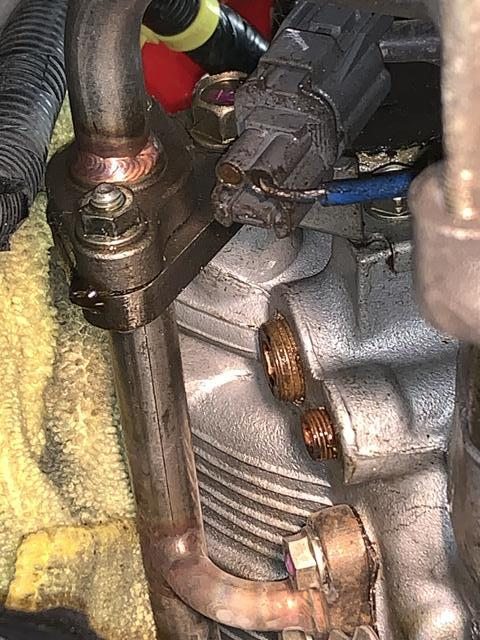
In the back of the picture below you can see the expansion joint.
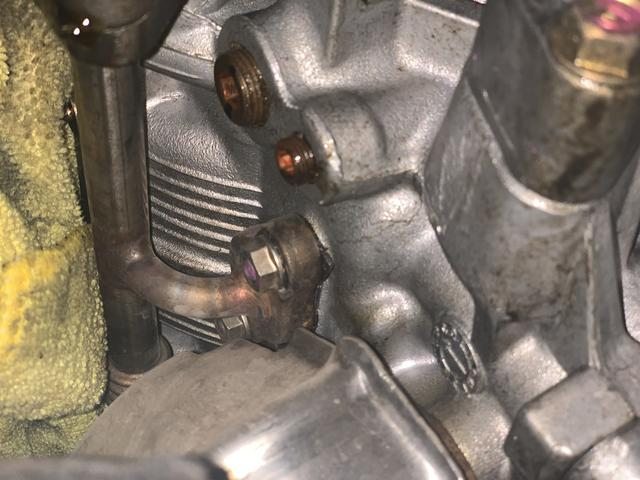
The oil is also pooling near that oil pressure sensor looking thing.
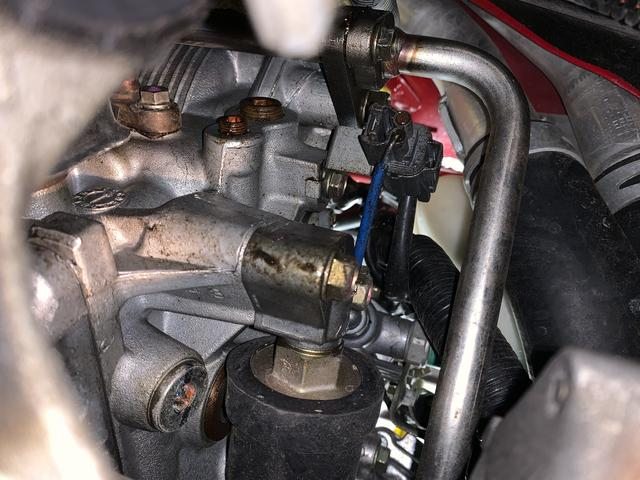
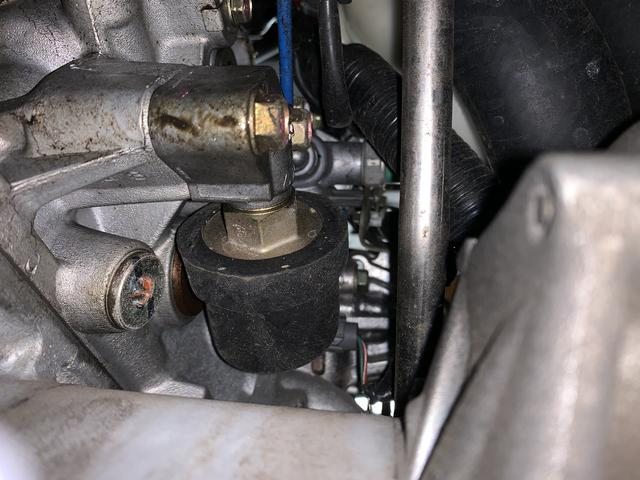
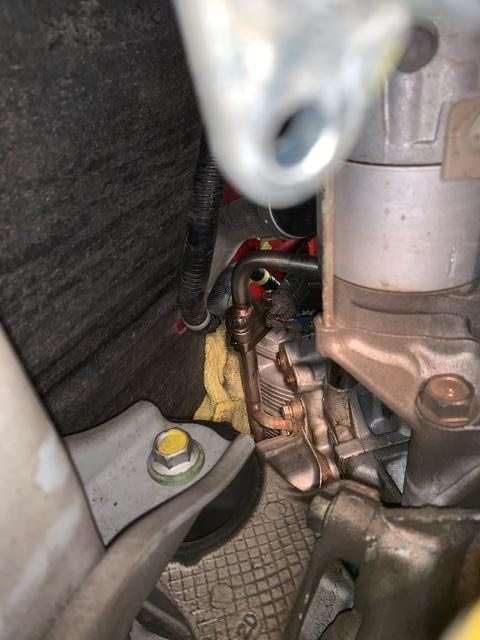
If you guys know of a place I can start to look for the leak please share.
The actual question is can you identify where this oil leak is coming from? If you want more pictures I can run out and grab them.
The original work:


Now the actual leak, this next picture is looking down from the top of the engine, front cylinder head, on the corner closest to the interior and center of the car. The oil is pooling on the bottom of this flange.

The next few pictures I basically put my phone up as high as I could and just started blindly shooting as I couldn’t really get my arms in there and still push the picture button. The bottom of the picture above is shown next. It almost looked to me as if that lower threaded plug was the culprit but that wouldn’t make sense from where the oil bubble is. I was thinking of just cave man tightening those 2 down but will hold off for now.

In the back of the picture below you can see the expansion joint.

The oil is also pooling near that oil pressure sensor looking thing.



If you guys know of a place I can start to look for the leak please share.


